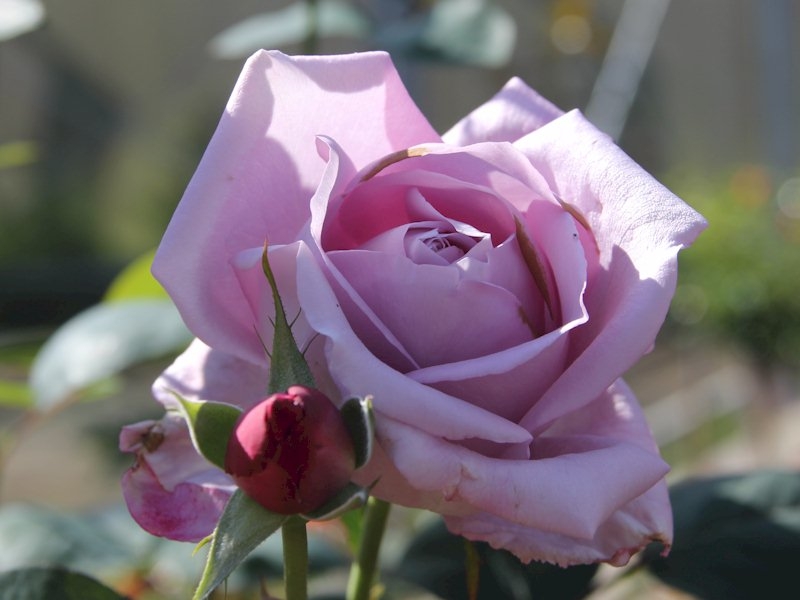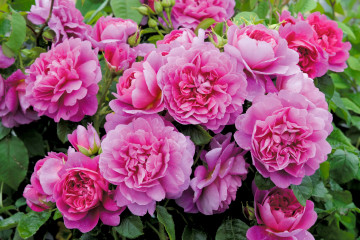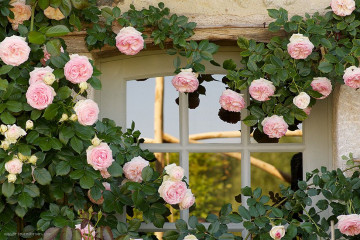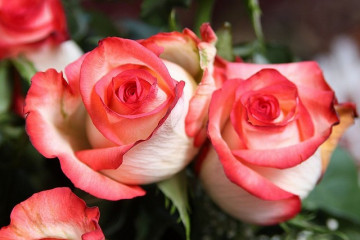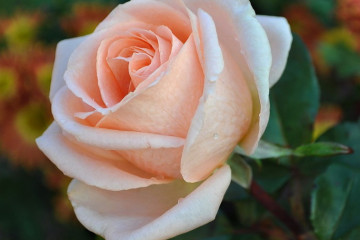Rose Mainzer Fastnacht - variety description
Content:
The most popular variety of roses is considered to be remontant species. They have a rich color and large inflorescences. One of these representatives is the Mainzer Fastnacht rose.
Flower features, characteristics and disadvantages
Mayzer rose belongs to the tea rose hybrids, it was bred in Germany and Poland by crossing the wild rose and the Sterling Silver variety.
The shrub plant is distinguished by its small size. It reaches a height of 120 centimeters and has a developed leaf structure. A large number of shoots and thorns are located on the stem. The bud contains 20-30 petals. The inflorescence has a deep purple color. When opened, the bud changes shape from elongated to goblet.
The obvious advantages are considered to be:
- ease of care;
- strong aroma;
- ideal for floristry, due to the long preservation of the shape after cutting.
The obvious disadvantages include:
- difficulty in combining with other flowers in the garden;
- susceptibility to disease;
- poor resistance to moisture.
Rose Mainzer Fastnacht is considered a unique varietal representative of its species. It is perfect for a single planting or for breeding in a rose garden to create bouquets. In landscape design, it is practically not used.
Growing a hybrid plant
Sisi hybrid tea rose loves light areas, but in hot climates it grows well on darkened soil. Like any other variety of hybrid flowers, Mainzer Fastnacht loves a spacious place, does not react well to moisture and strong winds. The quality of flowering is affected by soil drainage. At the wrong time, loosened soil near the bush leads to stagnation of moisture at the root system, causing the process of decay. Reproduction can be carried out using: cuttings, division of bush roots, seeds. The simplest and most effective is grafting.
The rules for planting a flower are pretty simple:
- dig up the soil thoroughly and clear it of weeds;
- the planting hole must be deep so that the root system takes root deep in the ground;
- roses love fertile soil, so if the soil is sandy or not rich in trace elements, it is necessary to fill in compost or special soil for planting roses;
- after planting, you need to strengthen the bush well, and then water it moderately;
- if shoots appear after a few days, you should definitely get rid of them.
Rose care rules
Compared to other flowers, varietals are unpretentious. Mandatory procedures that should be followed for better growth are:
- good soil drainage;
- timely watering. Roses need to be watered once a week. The recommended dose is 15-25 liters, depending on the arid climate.
- regular weeding from weeds;
- high-quality feeding, which is carried out twice: in spring and summer;
- prevention of diseases and pests by spraying;
- pruning wild shoots. The best time for this is early spring, when the buds are just beginning to swell.Pruning a bush during flowering is carried out for two reasons: giving the bush a shape and increasing the number of buds Pruning in the fall is more of a sanitary nature.
Roses that grow in central Russia need a mandatory shelter for the winter. Before wintering, it is necessary to carefully cut the bush to cover one stem.
All about blooming
The plant is famous for its luxurious buds of indescribable beauty. Their unique bluish hue makes them the king of all rose varieties. However, the color of the flowering may depend on the selected planting site. The lighter and hotter the area, the weaker the bluish tint will be.
As a rule, one bud is located on one shoot. The variety differs in height. The bush can be up to a meter in length. Due to the exclusive color of the rose, it is quite difficult to pair it with other flowers in a flower garden. These varieties will make excellent bouquets, in addition to which green plants and bouquet grass will do. The diameter of the bud varies from 10 to 11 cm. The scent of roses resembles a light combination of citrus and essential oils. During the peak of flowering, the flower needs additional feeding and careful treatment from pests.
Many gardeners complain about the lack of buds on a hybrid bush rose. If this happens, it is necessary to carefully organize the care, following all the requirements for growing a hybrid tea rose.
Breeding information
Rose Meiser can be propagated in several ways:
- the most convenient for gardeners is cuttings. Before breeding, you must select the stem from which the cutting will be cut. After pruning, you need to place it in a liquid that stimulates root growth for a day;
- one of the simple, but not always effective, is dividing by bushes. The seating procedure should be carried out in spring or autumn. In hot weather, the likelihood that the wounds in the root system will heal and take root in a new place is quite low;
- hybrid roses reproduce well by layering. However, this should be done in the fall or early spring, before new buds are laid;
- the most difficult, but most effective way is to propagate by grafting. The principle is similar to grafting, but it takes a long time (from 1 to 2 years) to bring out a new varietal plant.
Diseases and parasites
Roses, due to their attractiveness, are a magnet for various pests and diseases. Rose bushes "love" the following diseases and pests:
- powdery mildew;
- aphid;
- gray rot;
- rust and black spots;
- butterflies.
As a preventive measure, every month it is necessary to treat the rose with a solution of ammonium nitrate. This helps to strengthen the root system and full bloom.
Thus, the Mainzer Fastnacht rose is suitable for floristry, but absolutely not combined with other flowers in the garden. The exquisite shape and pleasant aroma make the plant desirable in artsy installations.
